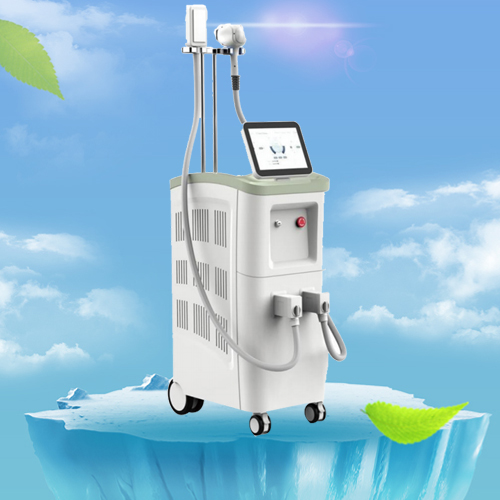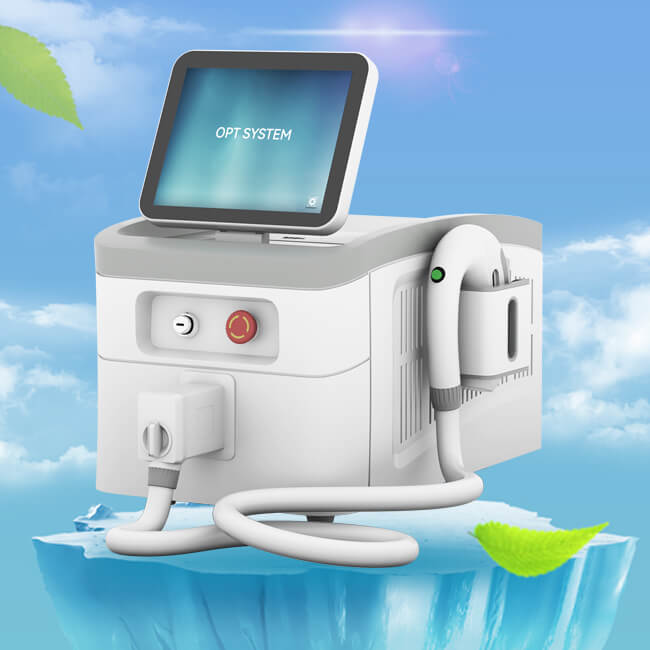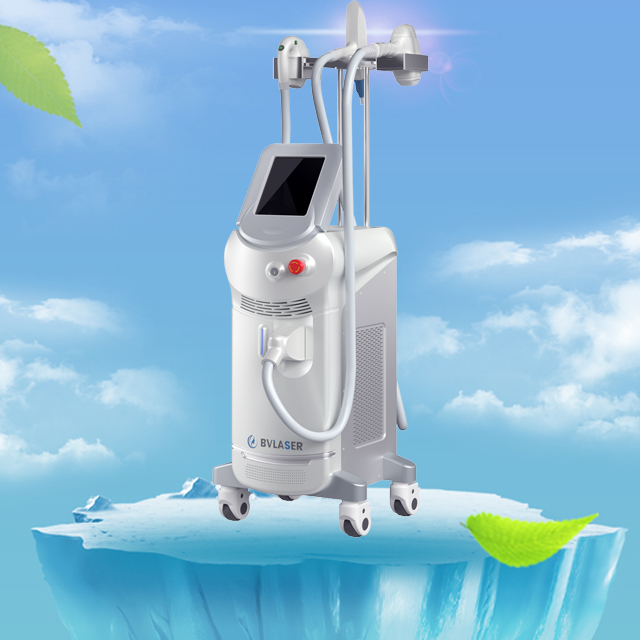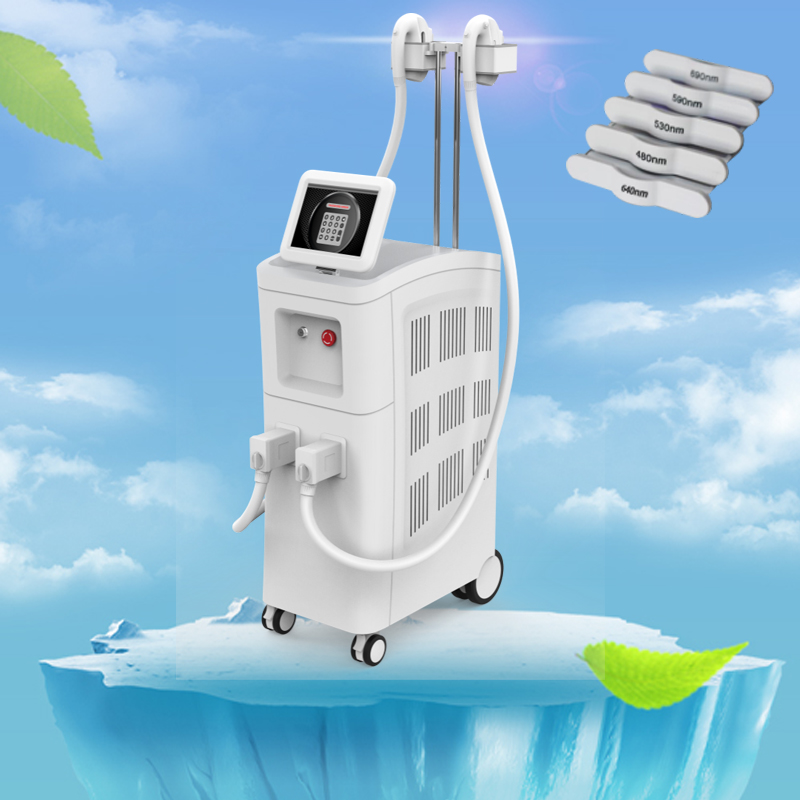Things you need to know about laser hair removal treatment
Author:baishilf Time:2024-06-13 16:16:58
Diode laser hair removal machine is a procedure to remove unwanted body hair. People may want the treatment on their underarms, back or bikini area. Most people need about multiple treatments. It’s usually safe, but side effects can include burns, scars or skin discoloration. It’s noninvasive, which means it doesn’t require any cuts in your skin. People may get this treatment on any part of their body, but the most common areas are: face, underarms, bikini area, or any areas that grow pubic hair, back, legs. Bestview Laser is a professional laser hair removal machine manufacturer.

How does laser hair removal work?
Laser treatment for face hair removal uses a process called selective photothermolysis. Heat from a laser destroys cells that have a lot of pigment (color). Since dark hair has a lot of pigment, it absorbs the most heat. Hair transfers heat to the hair follicles and destroys them, so hair can’t grow. A hair follicle has to be in its anagen or growth stage for the procedure to work. Follicles are in different stages at different times, so most people need multiple laser treatments.
Who can have laser hair removal?
Anyone with extra body hair can have laser hair removal. It’s usually a cosmetic procedure. It may improve your appearance or self-image. Many people also prefer not having to shave regularly.
Sometimes laser hair removal treats excess hair growth caused by:
1.Hirsutism, when women grow dark or coarse hair in areas where men usually have hair.
2.Hypertrichosis, when men or women grow excess hair anywhere on their bodies.
These conditions might be the result of:
1.Certain medications, including anabolic steroids and birth control pills.
2.Hormone imbalances, especially increased testosterone or androgen levels.
3.Inherited disorders, conditions passed from parents to children through genes.
4.Polycystic ovary syndrome (PCOS).
5.Tumors that produce hormones.
Laser hair removal is most effective for people with thick, dark hair and light skin. The contrast between skin color and hair color makes it easier for the hair to absorb heat.
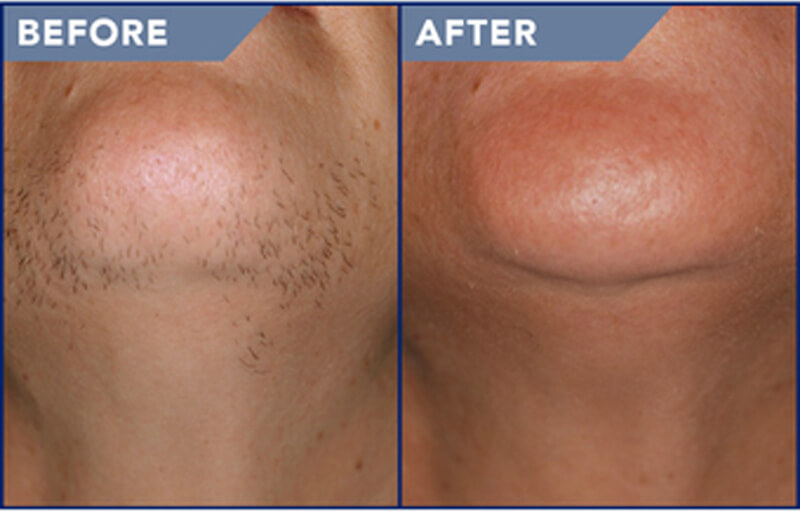
Who shouldn’t have laser hair removal?
Talk to your healthcare provider before having laser hair removal. You may need to avoid the procedure if you:
1.Are pregnant.
2.Are taking certain medications, such as acne treatments.
3.Have genital herpes (HSV-2) or are prone to cold sores.
4.Have keloid scars (raised scars).
5.Have or have had skin cancer.
How should prepare for laser hair removal?
Laser hair removal doesn’t require a lot of preparation, but there are some things you should do before your treatment.
In the weeks leading up to your procedure, avoid tanning beds and stay out of the sun as much as possible. Naturally or artificially tanned skin can make laser hair removal less effective and lead to side effects.
Shave the area that will be treated two to three days before a treatment. Laser hair removal treatments won’t work on areas where the hair is longer than a grain of rice. After treatment begins, avoid waxing, tweezing and plucking hair in the treated areas.
What happens during laser hair removal?
Laser hair removal involves several steps. Your healthcare provider:
1.Cleans the area.
2.Gives you protective glasses or goggles to wear during the procedure. Your healthcare also wears protective eyewear.
3.Treats your skin with the laser. It might feel like a series of stings. Some people describe it as a rubber band snapping against their skin.
Your procedure might take a few minutes or up to an hour. It depends on the size of the area that is being treated. You might smell smoke and burning hair. This is normal, and is the hair burning away from the laser’s heat.
What happens after laser hair removal?
Your skin might be red, swollen and a little painful after laser hair removal. You can use a cold compress on the treated area. Don’t expose the treated area to natural or artificial sunlight. You should be able to go back to normal activities right away.
What are the side effects of laser hair removal?
Possible side effects of laser hair removal include:
1.Blisters.
2.Burns.
3.Herpes outbreaks.
4.Hyperpigmentation, areas of skin that are darker than the surrounding skin.
5.Hypopigmentation, areas of skin that are lighter than the surrounding skin.
6.Infections.
7.Scars.
What are the benefits of laser hair removal?
The results of laser hair removal last longer than shaving, waxing, tweezing or plucking. Some people prefer laser hair removal to electrolysis. Electrolysis uses a thin wire to destroy hair follicles with electric current. Benefits of laser hair removal over electrolysis include:
1.Fewer treatments.
2.Less pain during treatment.
3.Reduced risk of ingrown hairs.
Laser hair removal is a more long-term solution to reducing body hair. Laser hair removal isn’t considered permanent, but it still has lasting effects. It reduces the number of unwanted hairs in the targeted area and when the hair does grow back, there’s less of it and it’s finer and lighter. It requires less upkeep than other options. If you are shaving to get rid of body hair, you have to do so every few days, and options like waxing and threading have effects that last about four weeks. In comparison, laser hair removal typically requires four to six sessions and then occasional maintenance in the future.
It can help with other skin issues as well. Laser hair removal also reduces ingrown hairs and can prevent inflamed bumps and itching. And since it uses light to get rid of hair, you don’t run the risk of dealing with the nicks, cuts and razor burn that go along with shaving.
No downtime is required. While laser hair removal treatments may leave skin a little red and swollen, you can pretty much go back to your daily routine immediately afterward. There’s no downtime to deal with since it’s non-invasive. The only thing you can’t do is immediately go out in the sun or use tanning beds or sun lamps.
It may save money over time. Although the cost of laser hair removal is initially more than, say, purchasing a razor and shaving cream, it pays off over time. Since laser hair removal greatly reduces unwanted hair, regular maintenance that goes along with shaving and waxing isn’t required, so once you pay the initial fee, you shouldn’t have to pay much more.
How long do the effects of laser hair removal last?
Most people see about a 10% to 25% reduction in hair growth after the first treatment. After all your treatments, you may not have new hair growth for several months or years.
Is laser hair removal permanent?
Laser hair removal isn’t permanent. It’s unlikely that treatments will target all the hairs in their growth phase. Some hair will grow back, but it’s usually lighter and thinner than before.
Can do laser hair removal at home?
The Food and Drug Administration (FDA) approves some laser hair removal devices for home use. Without supervision by an experienced healthcare provider, the risk of misuse or injury increases. Use extreme caution and protective eyewear if you do at-home laser hair removal.
Why do people get laser hair removal?
People often get laser hair removal to have the growth of unwanted hairs permanently reduced in a more convenient and time-saving way. Lasers can be used by dermatologists to safely remove unwanted facial and body hair without the daily need for shaving, tweezing, threading, waxing, etc., laser hair removal can significantly reduce hair in approximately six sessions. It eliminates the need for regular body hair removal and has long-lasting results.
Laser hair removal is a safe, effective way to remove unwanted body hair. Heat from a laser removes hair and destroys hair follicles. It’s not permanent, but the results last longer than plucking, tweezing or waxing. Most people need multiple treatments. Only an experienced healthcare provider should perform this procedure. Potential side effects include burning, scarring and permanent skin discoloration.
If you’re looking for a more permanent solution to getting rid of unwanted body hair, you may want to consider laser hair removal. A safe and effective alternative to other hair removal methods like shaving and waxing, laser hair removal promises a significant reduction of unwanted hair, especially when done by a trained professional using the correct type of laser for your skin type. Once treatments are complete, other hair removal methods will likely be unnecessary, and maintenance may be minimal.
That being said, laser hair removal can come with its own risks and side effects. These can range from minimal redness and swelling to more rare complications, like skin darkening or lightening, herpes simplex, blistering and scarring. It’s important to consider all of the pros and cons before making your first appointment.






